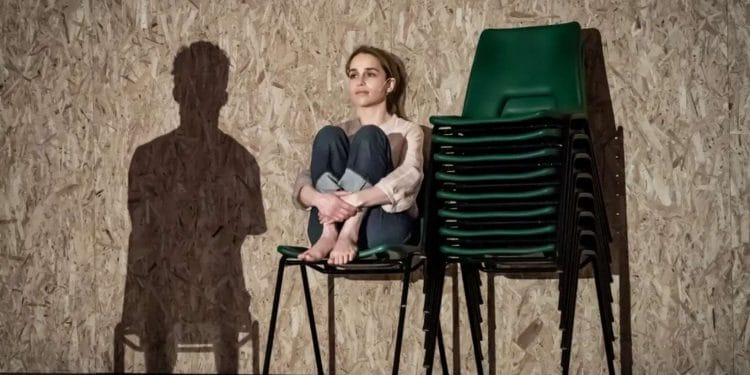 The Seagull at The Harold Pinter Theatre is not an easy play to watch. This is not a bad thing, as one cannot help feeling that the majority of modern media is spoon-fed to the masses. Just look at Netflix’s upcoming adaptation of Persuasion which already seems to bastardise Austen’s subtle wit in favour of garish consumability. This is not a trap which director Jamie Lloyd and writer Anya Reiss fall into in their adaptation of Chekhov’s work. When it comes to untangling the meaning of the somewhat meandering dialogue, the audience is thankfully left to their own devices. After all, who wants art delivered up on a plate with an instruction manual as to how we are supposed to feel about it.
The Seagull at The Harold Pinter Theatre is not an easy play to watch. This is not a bad thing, as one cannot help feeling that the majority of modern media is spoon-fed to the masses. Just look at Netflix’s upcoming adaptation of Persuasion which already seems to bastardise Austen’s subtle wit in favour of garish consumability. This is not a trap which director Jamie Lloyd and writer Anya Reiss fall into in their adaptation of Chekhov’s work. When it comes to untangling the meaning of the somewhat meandering dialogue, the audience is thankfully left to their own devices. After all, who wants art delivered up on a plate with an instruction manual as to how we are supposed to feel about it.
The play follows four main characters, Nina (Emilia Clarke) just wants to be famous and is naively starstruck by Trigorin (Tom Rhys Harries) who is a famous, if rather middlebrow, writer who doesn’t think his writing is any good. Trigorin is infatuated by Nina but is dating Arkadina (Indira Varma), a fading actress who is the mother of Konstantin (Daniel Monks). An aspiring playwright, Konstantin seeks the attention of his mother and the love of Nina. In addition to this rather tangled web is the ensemble cast of characters who further complicate matters.
While many people, most likely, will want to see The Seagull because of the star power of Emilia Clarke, is it actually her Game of Thrones co-star Indira Varma that steals the spotlight? Arkadina under the careful handling of Varma is a particularly vibrant character. She is that one friend’s posh mum who would darling you and then insult you in the same breath, and the effect is enthralling to say the least. Of course, Varma has a multitude of theatre credits under her belt while Clarke has only one previous to this. It is perhaps the fault of the character that causes Clarke to be outshone, Nina is rather irritating in her pure sincerity and lacks the spice of Arkadina. However, Clarke’s dynamically expressive face lends itself to the stage and as such is a delight to watch, as are the other cast members.
The first act takes place in a huge wooden box which the actors are forced to climb in and out of, and the only props are green chairs, the kind that you would find in a village hall. Both the staging and the choreography are minimal, allowing the weight of the dialogue to take the brunt of the audience’s attention. It is skilfully done but at times it does feel a bit interminable.
There is something quite ridiculous about the characters of The Seagull. They bemoan lives which seem perfectly nice, or desirable even. They wax lyrical about fame and art and what it means to create. In simple terms a lot of the time they twitter on about nothing much. However, one cannot help feeling that this irritation with Chekhov’s characters stems from the fact that we see aspects of ourselves in them and are forced to confront the uncomfortable fact that we too are somewhat ridiculous. Which is perhaps what Chekhov intended.


















Comments 7